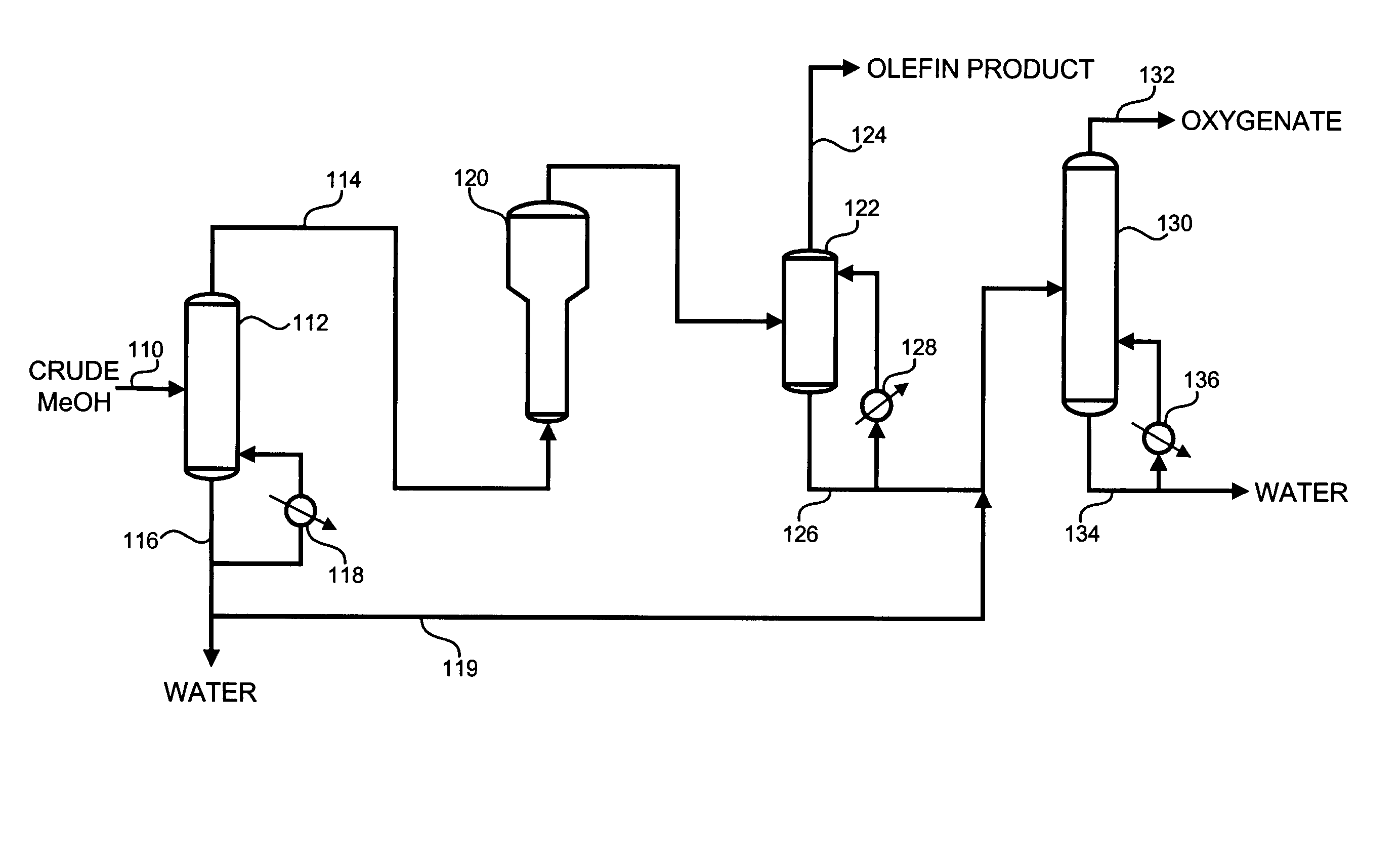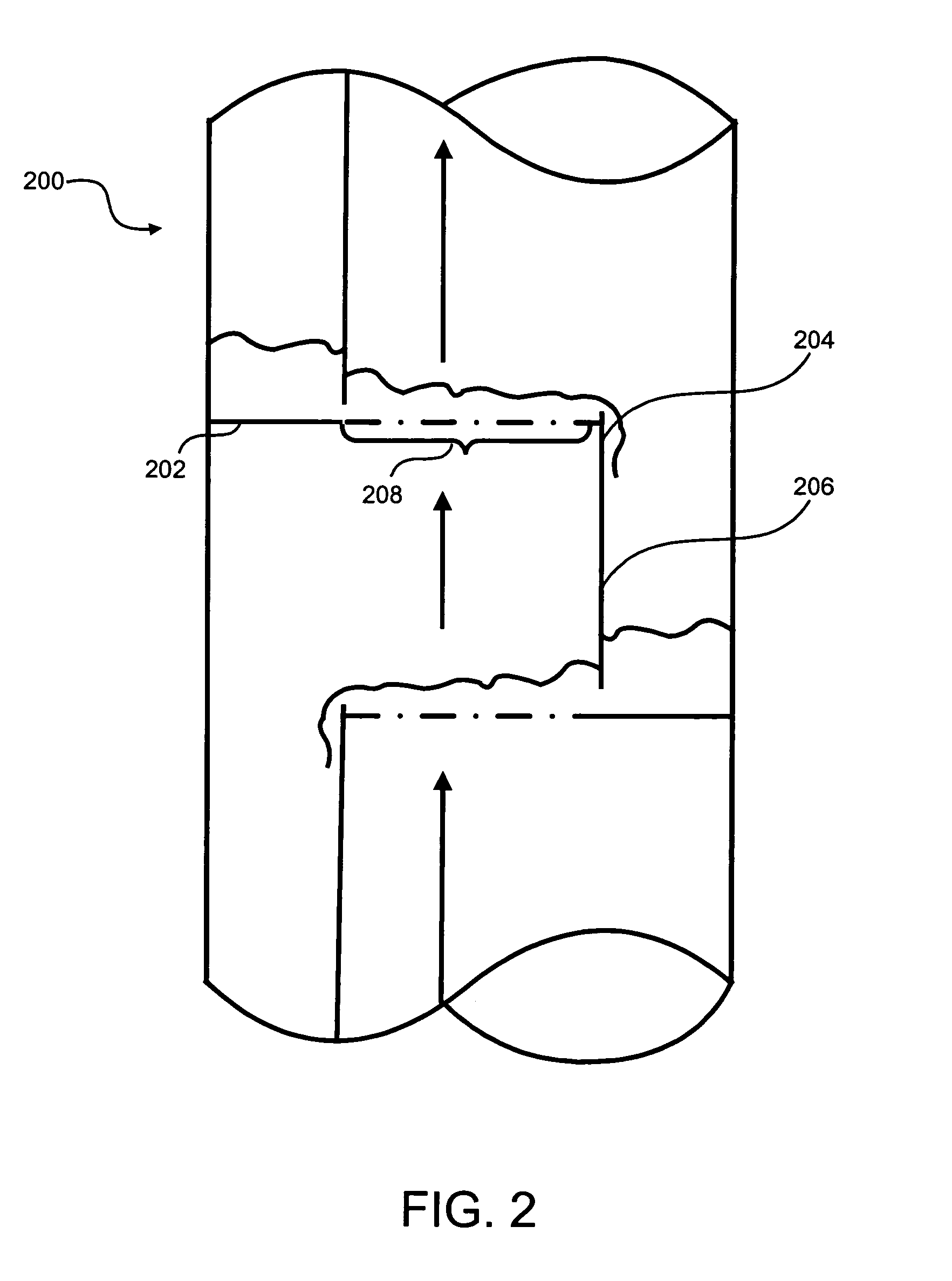Oxygenate to olefin manufacture and recovery process
a technology of olefin and oxygen, which is applied in the direction of oxygen compound purification/separation, carboxylic compound preparation, separation process, etc., can solve the problems of prone to bottlenecks and complex systems operating methods of such integrated systems
- Summary
- Abstract
- Description
- Claims
- Application Information
AI Technical Summary
Benefits of technology
Problems solved by technology
Method used
Image
Examples
Embodiment Construction
I. Methanol Feed and Olefin Recovery
[0019]This invention is directed to methods for forming an olefin stream from a methanol stream. The invention provides an advantage in that generally lower grade methanol, such as chemical grade or crude methanol, can be used as feed to form the olefin stream. Although such streams contain significant amounts of water, it is not necessary to remove all of the water, since the water will not generally be detrimental to forming the desired olefin stream. In one embodiment of the invention, the process uses a relatively simple distillation type step to vaporize a portion of the methanol feed stream and send the resulting vapor stream to a reaction unit to form the olefin stream.
[0020]Another advantage provided by the invention is that the downstream recovery units can be operated with reduced fouling or plugging due to the presence of fine solids components. In general, the formation of olefin from methanol is accomplished by contacting the methanol...
PUM
| Property | Measurement | Unit |
|---|---|---|
| diameter | aaaaa | aaaaa |
| atomic number | aaaaa | aaaaa |
| temperature | aaaaa | aaaaa |
Abstract
Description
Claims
Application Information
 Login to View More
Login to View More - R&D
- Intellectual Property
- Life Sciences
- Materials
- Tech Scout
- Unparalleled Data Quality
- Higher Quality Content
- 60% Fewer Hallucinations
Browse by: Latest US Patents, China's latest patents, Technical Efficacy Thesaurus, Application Domain, Technology Topic, Popular Technical Reports.
© 2025 PatSnap. All rights reserved.Legal|Privacy policy|Modern Slavery Act Transparency Statement|Sitemap|About US| Contact US: help@patsnap.com



